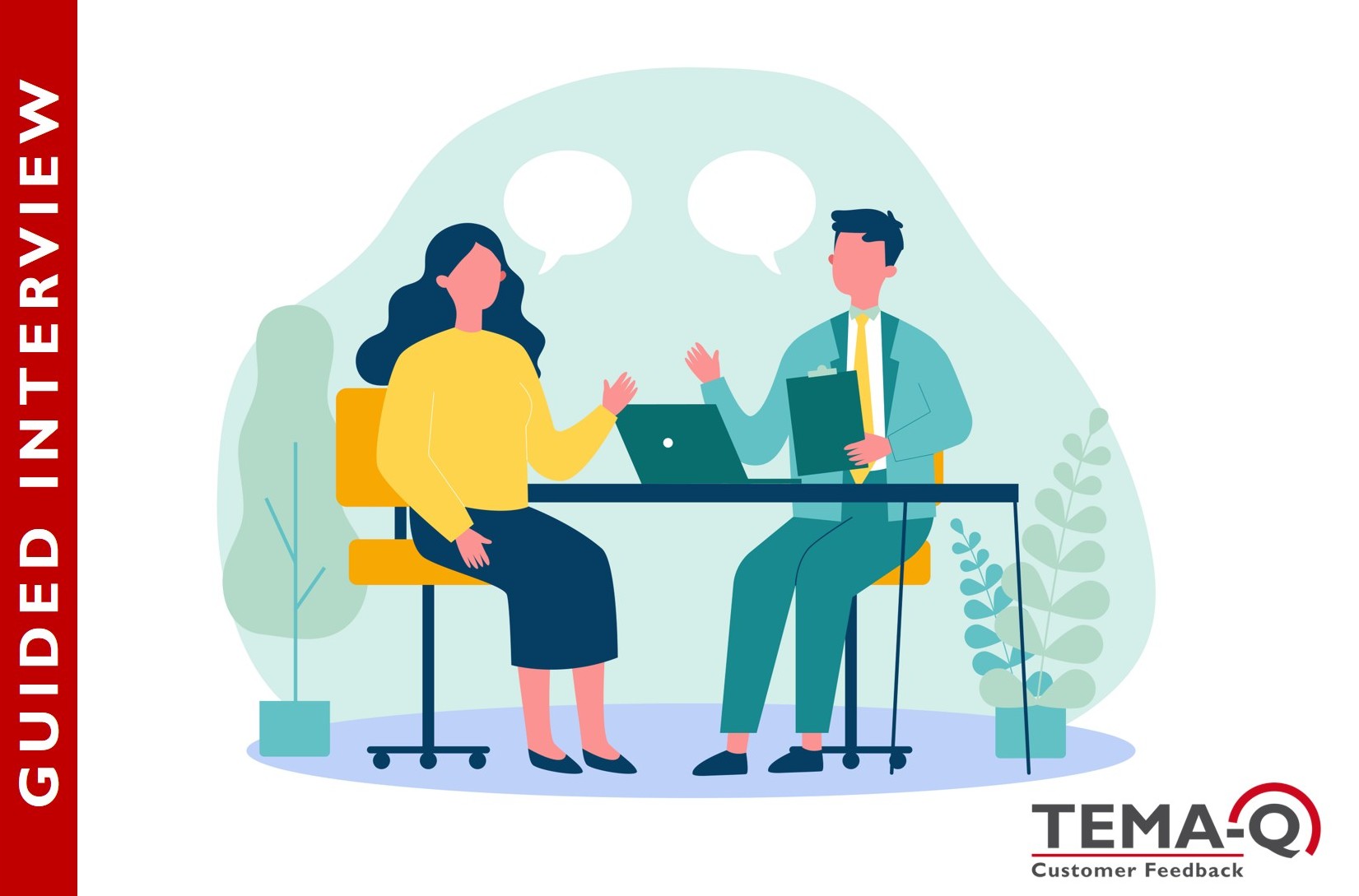Guided interviews are a method used in qualitative research (Prochazka, 2020). These interviews often serve as preparation for a subsequent quantitative survey (Hepperle, 2015). Compared to other qualitative open-ended survey methods, a guided interview is relatively structured (Loosen, 2015).
The guideline, which gives this survey method its name, specifies topics and specific questions to be addressed during the interview. However, the exact course of the interview is not defined in advance. Depending on the answers given by the interviewees, spontaneous decisions are made regarding which questions are asked at which point in time. This creates a relaxed interview situation that encourages open discussion and does not have a limiting effect due to rigid guidelines. Despite the different ways the conversation may go, the predefined topics and questions ensure that the results are comparable at the end. If topics or aspects arise during the interview that were not considered in advance, this method allows them to be addressed spontaneously. (Prochazka, 2020)
Guided interviews are often used in the context of a mixed-methods approach. This means that both qualitative and quantitative research methods are used together. The findings from such a qualitative interview often serve to formulate hypotheses or to design a quantitative questionnaire. For example, answer options for closed questions can be derived from open answers. (Hepperle, 2015)
In TEMA-Q, standardized interviews are usually used to obtain quantitative data as a result. However, by including many open-ended questions and various lines of questioning with probing follow-up questions, depending on the respondent’s answers, there are some parallels to the guided interview. To get answers that are as in-depth as possible and can also be evaluated qualitatively, we often work with recordings of original customer statements, the so-called Voice of Customer. Subsequent transcription and coding enables quantitative processing and evaluation of the collected data, but it is always possible to trace the data back to the customer statement in the original wording. This minimizes the loss of information.
Take a look at our LinkedIn profile at https://www.linkedin.com/company/tema-q/ to gain exciting insights into the world of customer and employee experience in the future.
If you have any questions about these or other topics, or would like a live demo version of ClaralytiX via video conference, click here to make an appointment or contact us.
Prochazka, Qualitative Leitfadeninterviews – Methode, 2020
Hepperle, Leitfadeninterviews, 2015
Loosen, Das Leitfadeninterview – eine unterschätzte Methode, 2015

